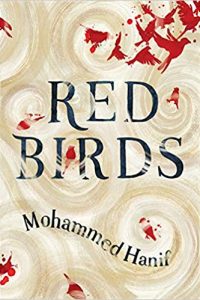Laird Barron reviews V.H. Leslie
Skein and Bone, V.H. Leslie (Undertow 978-0993895104, $18.99, 290pp, tp) July 2015. [Order from Undertow]
 Canada is a hotspot for weird fiction and horror of late. As with yeoman efforts occurring in the USA and Britain, credit independent publishers for an embarrassment of literary riches. Michael Kelly’s Undertow Press is a champion of literary horror and V.H. Leslie’s Skein and Bone fits the mold of the quiet, nuanced work we’ve come to expect from this publisher. Leslie’s collection is moody and atmospheric; cozy, yet far from comforting. She affects an intimate style in this mosaic of fraught personal relationships and their frequent intersection with cruelty, mishap, and, on occasion, outright horror. These are investigations of the darker aspects of love and longing, of failed romance and embittered sibling rivalry and the terrible lengths certain damned souls will go to preserve domestic tranquility.
Canada is a hotspot for weird fiction and horror of late. As with yeoman efforts occurring in the USA and Britain, credit independent publishers for an embarrassment of literary riches. Michael Kelly’s Undertow Press is a champion of literary horror and V.H. Leslie’s Skein and Bone fits the mold of the quiet, nuanced work we’ve come to expect from this publisher. Leslie’s collection is moody and atmospheric; cozy, yet far from comforting. She affects an intimate style in this mosaic of fraught personal relationships and their frequent intersection with cruelty, mishap, and, on occasion, outright horror. These are investigations of the darker aspects of love and longing, of failed romance and embittered sibling rivalry and the terrible lengths certain damned souls will go to preserve domestic tranquility.
Skein and Bone opens with ‘‘Namesake’’, a story about Cecelia J. Burden and her pathological obsession with her surname (perhaps the end result of years of suffering at the sharp tongue of J’s shrewish mother). Her attempts to find the right man with the right name leads to a cocktail lounge liaison where she and her date play around with pneumatic chairs. Their antics are characterized as ‘‘…bobbing up and down like fish caught in a net.’’ We may be temporarily lulled by certain expectations hardcoded within the literary horror tradition, but, ultimately, first impressions of whom is predator and whom is prey are validated.
The titular ‘‘Skein and Bone’’ transports readers to France where college student siblings Laura and Libby embark upon a fateful train trip. Tension arises when sensible Laura attempts to rein in her freewheeling older sister as they detour to investigate a mysterious château. Considering the genre, such excursions can never end well: this is horror in a classical prescriptive, or cautionary mode. ‘‘Skein and Bone’’ also serves as feminist allegory with the trappings of a black fairytale.
‘‘Bleak Midwinter’’ is as cold and stark as the elegiac title suggests. Set against the encroaching backdrop of an endless winter apocalypse, this piece reinforces the ongoing theme of relationship bonds (or the lack). The focus here is upon a mother-daughter dynamic. From the opening paragraphs:
The sky is still the grey-white of winter and colossal snow clouds hang dense and low and hostile.
The world outside is silent. Snow smothers the earth like an enormous blanket, a cold blanket, a vast emptiness stretching as far as the eye can see. If you were to shout out here, your words would be snatched away, hungrily absorbed into the void. The muffled syllables would lie dormant, waiting for a thaw that never comes.
Leslie’s prose is austerely elegant as a matter of course; however, the effect is amplified in this passage. Among her stylistic gifts is a fine sense of rhythm and an ear for pitch, both of which she adjusts according to design. As I stated above, a unifying theme of this collection is its moodiness, moodiness that owes much to subtle shifts between the utilitarian, the ornate, and the slow, inevitable revelation of secrets and bleak wonders infesting these stories like heartworm.
‘‘Preservation’’, begins with scenes from a picturesque, Leave it to Beaver marriage – a marriage that isn’t as wholesome as it initially appears and in fact may be headed straight to hell in a handcart. In certain respects, ‘‘Preservation’’ could easily represent the core of the collection. It deftly showcases the disparate recurring elements and techniques that Leslie brings to bear time and again, not the least of which are biting surrealism, gallows humor, and maniacal, yet by horror fiction’s own rules, eminently reasonable paranoia that edges into Shirley Jackson territory.
The collection brings down the curtain with ‘‘Senbazuru’’, told from the perspective of the dissatisfied wife of a diplomat who seeks to come to terms with her ennui. It’s a powerful and beautifully restrained piece about love, war, origami, and the various prisons our lives become, whether by choice or by fate.
The weight of a collection is usually borne by the opening, middle, and closing tales. Skein and Bone deviates from this pattern. Much of the power of this particular ensemble derives from the cumulative rather than the singular effect and achieves momentum as it unspools, tale by tale. While the frights peak with a jolt and occasional drops of blood are let, Leslie imposes her will through menace and dread moreso than depictions of direct violence. This is horror that fulfils a literary equivalent to sipping black tea and brandy, not the thunderclap of a shot of raw whiskey through gritted teeth. Skein and Bone gets one coming and going, but mostly going. These stories linger in the mind like ripples in a night pond long after the flung stone sinks into darkness.





